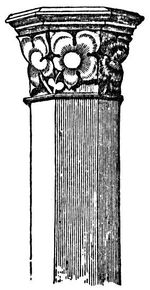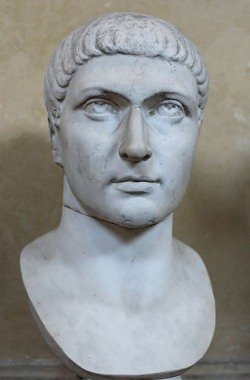Christian-History.org does not receive any personally identifiable information from the search bar below.
The Council of Nicea and the Nicene Era
The Nicene Era, named after the Council of Nicea in A.D. 325, is very possibly the most important era of Christian history.
The study I put into these articles has resulted in a book called Decoding Nicea. Often reviewed as "interesting," it tells the story of Nicea in more detail than is possible here. Available wherever books are sold. See Amazon reviews.
 |
Though it encompasses only a short time period—from perhaps A.D. 303, the start of the Great Persecution, to A.D. 383, the decree of Theodotus I—the events of the Nicene Era were earth-shaking, affecting not only Christianity but the history of the western world. |
 |
The Great Persecution and the Rise of Constantine
 Bust of Constantine the Great
Bust of Constantine the Greatpublic domain
The Nicene Era begins with the Great Persecution in in A.D. 303. It lasted until it was called off by Galerius in A.D. 311.
Constantine the Great was "converted" (in a sense) by his famous vision as he prepared for battle with Maxentius, his rival emperor in the west. While Constantine would not count himself a Christian until his baptism on his deathbed in A.D. 337, he did grant Christianity a favor and an influence in government that it had never before experienced.
It would prove the end of Christianity as it was known before Nicea.
Original documents from the Nicene era and the Council are now on this site to read online or as a downloadable PDF. (The "clickable" table of contents are not clickable in the PDF.)
As are defenses of the Nicene Creed against modern detractors.
The Arian Controversy
A disagreement between a bishop and one of his elders in Alexandria in A.D. 318 led to a controversy that threatened to split the empire as well as the Church.
The emperor sought to save his empire by convening a council in Nicaea, in modern-day Turkey. Every bishop in the empire was invited to the Council of Nicea, and estimates vary from 250 to 318 bishops that were in attendance.
The Council of Nicea and the Doctrine of the Trinity
The Doctrine of the Trinity
I put together a thorough but—hopefully—simple explanation of the Pre-Nicene doctrine of the Trinity
The Council of Nicea drew up a creed based on the Rule of Faith of the church in Caesarea. The Nicene Creed not only confirmed the ancient view of the Trinity held by the Church, but it specifically refuted and condemned Arianism. [The Apostles Creed is a similar modern version of the Nicene Creed.
The biggest controversy of Nicea concerned the word homoousios or "one substance," the one addition—besides the anathemas—that the council made to Caesarea's rule of faith.
The anathemas, a word that means condemnation or curse, were added to the end of the Creed to specifically put an end to Arianism.
Unfortunately, it didn't work.
There are a lot of myths about the Council of Nicea. This section addresses everything that's important about Nicea. If you hear about something else, and it's important and not covered here, then it's a myth.
The Fall of the Church
The fall of the church—which I like to call The Great Judo Throw—was a great fall. At one point,"Christians" in Constantinople, still arguing over Arianism even after the Council of Nicaea, beat each other to death until the well overflowed with blood and ran into the streets.
Hear about the people and events leading up to Nicea, what happened at the council, and what it means for us today.
Perhaps Christians were just bored with their new-found comfort under Constantine. It is apparent that when the majority of the Roman empire turned to Christianity, they did not also turn to Christ and become Christians. Christians possess the Spirit of God (Rom. 8:9).
Prior to Constantine, early church bishops were not paid. They were supported with the widows. After Constantine, not only did they receive a salary, but there was much prestige and power associated with the office of bishop.
Obviously, the men who filled the role before Nicea were different sort of men than those that would fill the role afterwards.
I'm slowly making a series of some of those more horrifying 4th century stories. The first new one I call The Magic Hand of Arsenius.
In February, 2010 I added the story of Bishop George.
There is no doubting how thorough the fall of the Church was. The histories before and after the Nicene Era cannot be compared to one another.
Eusebius wrote a history in A.D. 323, two years prior to Nicea, that spoke of the expansion of the churches, great men of God, defending the faith against heresies, and the righteousness of the saints. In A.D. 440, Socrates Scholasticus took up his history where Eusebius left off, reporting controversies, intrigues, suspicions, and even violence and murder.
Early Church History Newsletter
You will be notified of new articles, and I send teachings based on the pre-Nicene fathers intermittently.
When you sign up for my newsletter, your email address will not be shared. We will only use it to send you the newsletter.